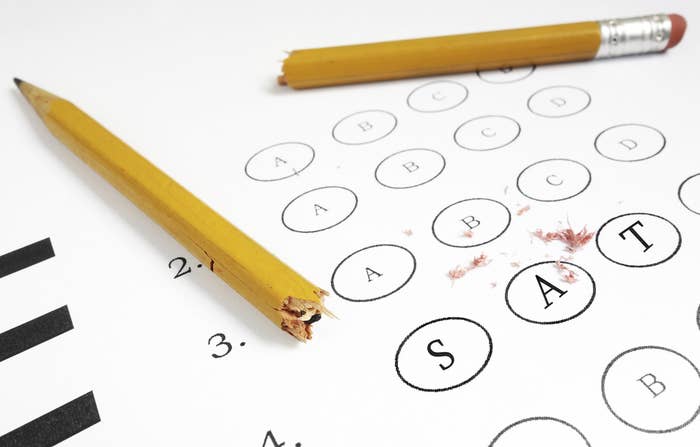
The College Board, the company that makes the SAT, announced major changes Wednesday to the format of the test, including eliminating the mandatory essay and the penalty for guessing incorrectly.
The reason for these changes, said David Coleman, the president of the College Board, is that there's a "disconnect" between the content of the test and what's taught in most high schools.
Under the changes, slated to be introduced in Spring 2016, the scoring will go back to a 1600 scale, with a math section being out of 800 points and the reading and writing sections combined into an 800-point section called "Evidence-Based Reading and Writing." The now-optional essay will be scored separately.
There will also be an effort to ditch unused vocabulary words and replace them with words "that appear in college courses, such as 'empirical' and 'synthesis.'"
The removal of the guessing penalty is significant. Most students can eliminate at least one, if not two incorrect answer choices right off the bat. If there's no penalty against guessing, students should be more confident about choosing between three tough answers instead of five. It's simple statistics really: Smart guessing means more right answers, which means higher scores. The ACT test does not have a penalty for guessing.
This means a few good things for test takers. If a student decides not to tackle the essay, the test will now be almost three hours long instead of the excruciating four.
But an additional question type added to the newly formed "Evidence-Based Reading and Writing" section may raise some students' concern. The New York Times reports that test-takers will now "be asked not just to select the right answer, but to justify it by choosing the quote from a text that provides the best supporting evidence for their answer."
Coleman told the Times that the new test has "been redesigned with an eye to reinforce the skills and evidence-based thinking students should be learning in high school, and move away from a need for test-taking tricks and strategies."
But no matter the changes made by the College Board, it is hard to make a test that cannot be cracked. While the SAT is supposed to be a great equalizer, those with access to costly test preparation will presumably still maintain something of an edge over those who do not.
Coleman also said the College Board is trying to address some of these inequities by giving waivers to low-income students, allowing them to apply to colleges for free, and giving some free online practice courses. But the biggest problem with the SAT still stands; data shows that students from better areas with better schools do better on the test. According to the College Board's own study in 2012, there is a significant correlation between family income and test scores on the SAT, with average scores increasing with every $20,000 in additional family income.
